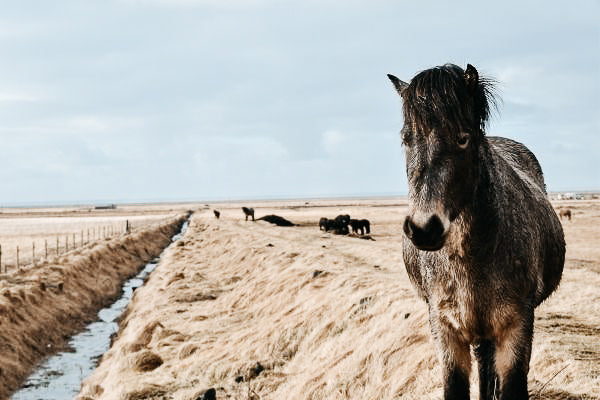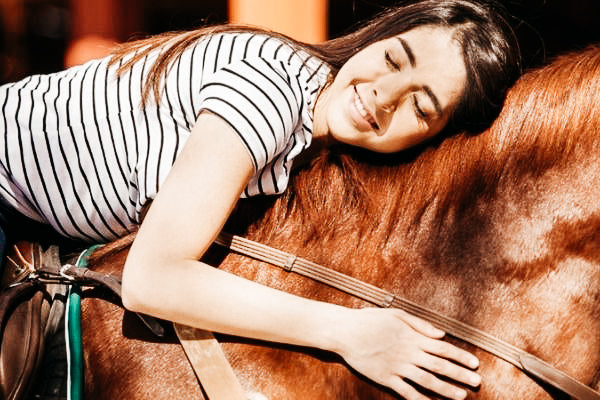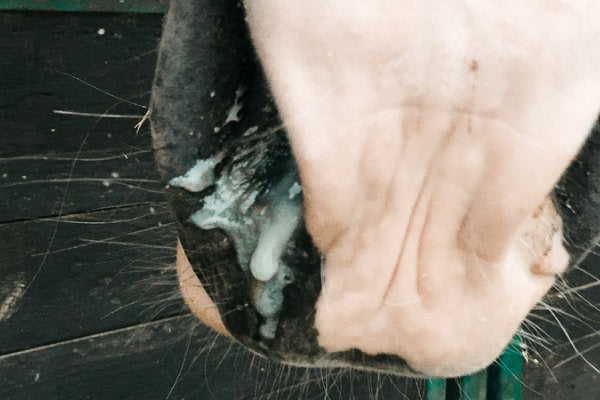
Icelanders - the delicate dancers
It's hard to imagine today's equestrian sport without them - the handy little ones with the enchantingly fluffy mane and incomparable robustness. In this country they are affectionately called “Isi”. When the Icelanders arrived in our country, they initiated a real mass movement.
Back then, “equestrian sports” just meant dressage and jumping on long-legged warm-blooded horses - now it’s a different world. The enjoyment of recreational riding is becoming more and more important and attitudes towards keeping animals have improved significantly. Robust horses are on the rise and stand up to the “big ones”. Icelanders are doing their part.
Read more about these interesting gaited horses! Maybe you'll get Nordic fever too.
Exterior, interior and diverse coat colors
If you look at the little gait miracles, you really recognize a picture book pony. Their height is around 1.30 meters to around 1.45 meters. They have a strong, harmonious stature. The croup is off and the tail is set low. The Isi's long hair is strong, full and, in addition to the attentive eyes and delicate nostrils, another identifying feature. The pretty little ones have a stable bone base and hard hooves.
When it comes to the Icelandic fur drawings, they say: Nothing is impossible! There really is a huge variety of color combinations here. Everything is represented, from foxes and browns to gray horses, black horses and piebalds. There are also other shades such as earth-colored, wind-colored and mouse gray nuances. Some of the ponies even have precocious stripes on their feet. Almost like a zebra. You just won't find spotted tigers in a group of Icelandic horses.
The inner values of the pretty ones are consistent with the external appearance. They are great employees, sure-footed, courageous, completely independent and behave respectfully towards their people. Icelandic horses show a willingness to perform in all riding disciplines and offer an unbridled forward drive. There is quite a bit of temperament in her small body.
Posture form
These ungulates are ideal for keeping in open stables. They are very herd animals and would certainly not live a happy life separated in a box. Since Icelandic horses utilize their feed well, high-quality roughage throughout the day plus minerals is usually sufficient.
The gaits of the Icelanders
What's fascinating about the Isi is not just its appearance and its robustness. The special gaits he offers are a dream for every rider. Even at higher speeds, Icelandic horses give us a super comfortable sitting experience with minimal vibration. How is this possible?
These ponies have an innate predisposition. In addition to walk, trot and canter, they also offer the tölt (also rideable at different speeds) and the racing pace (mainly a competition gait).
When tölting, they straighten up at the front and, unlike when trotting, the front leg and hind leg on the same side move forward/back together. The swing phase is less directed upwards than in the traditional trot. Totally “easy”!
But these horse gaits need to be learned. Because: You have to be able to practice these running techniques cleanly! Not all Icelanders have the same level of tölt. This requires sensitivity and careful training of horse and rider. You can get a picture of it at an Icelandic horse stud, for example. You will also notice that these gaited horses carry a different saddle on their backs.
The Icelandic saddle is slightly longer and has a flatter seat. It is worn further back because the ponies need a lot of shoulder room. A “normal” riding saddle is usually not a perfect fit, has a withers chamber that is too high and a seat that is too deep. The temple length for tölt is longer. The Isi saddle also has curved safety bars. Exemplary!
Icelandic horse breeding
In fact, the history of Icelandic horses is very interesting. Around the ninth century, Norwegian farmers took their animals to the fiery island. They owned Germanic and Celtic ponies. Over the next few centuries, the Icelandic horses developed from these two extremely tough breeds. At that time, a legislative assembly regulated the breeding of animals. Pure breeding has been practiced in Icelandic horses for around 1000 years. To this day, an import ban prohibits neither foreign horse breeds nor our own animals that left the country for tournament purposes from entering the country.
The barren Iceland didn't make life easy for the little horses. And so only the strongest among them survived. It toughened the ponies and produced a strong and healthy breed. The people of the beautiful island love their horses very much. The locals praise their favorites in legends and poetic texts. The fuzzy ponies are the pride of the Icelandic nation.
Summary - tough guys win hearts
It's not just children who fall in love with the shaggy Northern Lights, because their endless charm and rideability are simply enchanting. The fact is, the small gaited horses expand our equestrian sport positively. It's not for nothing that they say: The best 5-speed gearbox in the world comes from Iceland! Well, are you now in the mood for that Isi feeling?
Animalons brush recommendation for the Icelandic horse:
The rubber knobs of the Care Flex massage curry comb massage the gaited horses and brush the dirt and dust out of the fur.
Afterwards, we recommend using the Care Flex body brush, which effectively removes loose dust and dirt from the horse's fur.
Discover more posts

Riding therapy – help with special power
Since around 450 BC. BC In the years of the well-known Hippocrates, we knew about the beneficial value of the horse's movements on human health. The profound, healing effect takes place due to...
Continue reading
Respiratory diseases in horses – interesting facts
Healthy lung function is very important for the horse as an exercise animal. In fact, there are a lot of riding horses that are affected by respiratory diseases such as COPD or COB. Coughing i...
Continue reading
